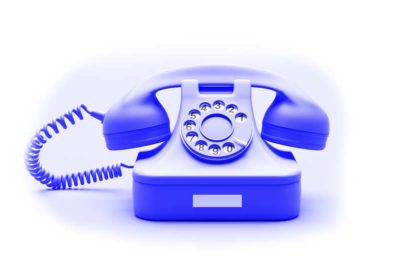 Manufacturers are scrambling to retire phone, fax, and email interaction with dealers and distributors. Here are 9 key steps to resolve the issue.
Manufacturers are scrambling to retire phone, fax, and email interaction with dealers and distributors. Here are 9 key steps to resolve the issue.
Phone, fax, and email ordering have served manufacturers well for years. However, the digital age has put pressure on many organizations to launch self-service B2B portals. Once COVID-19 hit, manufacturers found that a customer portal wasn’t a “nice-to-have”—it was a “need-to-have.”
But COVID has had another effect as well. Organizations can no longer wait for year-long projects that promise luxury-model B2B eCommerce solutions. They need a daily driver for their B2B portal—and they need it today.
So how do you eliminate phone, fax, and email interaction without buying a massive solution that takes too long to implement?
Here are 9 key steps to take.
Click to jump:
1. Be honest about the problem
2. Identify internal stakeholders
3. Quantify the impact of fixing the problem
4. Recruit customers for input
5. Hash out your priorities
6. Plan to start small and grow incrementally
7. Minimize the number of vendors
8. Look for a managed, integrated solution
9. Challenge yourself to get ROI this quarter
1. Be honest about the problem
 If you’re going to go down this path, you have to believe it’s time to retire phone, fax, and email ordering. You have to commit to fixing the problem.
If you’re going to go down this path, you have to believe it’s time to retire phone, fax, and email ordering. You have to commit to fixing the problem.
That’s the hardest step. But once you take it, you’re already halfway there.
It’s courageous to acknowledge this problem and start thinking about a solution. And while it’s difficult, you’re not alone in having this issue. In fact, you’re in good company. Check out these Corevist case studies for real-life stories of people who’ve solved this problem for their companies.

2. Identify internal stakeholders
Other than you, who else at the company is hurting right now because of phone, fax, and email interaction? Who isn’t hitting their numbers?
To put it more aggressively, is there anyone whose KPIs are actually too low because the organization assumes you can’t fix this problem?
Here’s one more angle to consider: Who will see process improvements and financial impact from eliminating phone, fax, and email interaction?
Typically, these leaders are hurting because of legacy processes for customer interaction.
- Operations or customer service executive. This person knows the burden of phone, fax, and email interaction better than anyone else. Day in and day out, they’re working with a large call load and limited capacity from their reps. In many scenarios, they can’t hire more staff. Even if they could, they don’t have the resources to train new hires fast enough to respond to an increasing backlog of customer inquiries. Throw in supply chain disruption and acquisition of new product lines, and this leader has extra complexity on their plate.
- Sales executive. If their reps are depending on digital catalogs without ordering capabilities (or, gasp, print catalogs), the sales executive needs to empower their reps to sell better. Phone, fax, and email interaction create a divide between proactive sales activities and the actual transaction. If sales reps are taking orders manually, either alongside customer service reps or in place of them, the sales executive is really hurting. Sales reps should never do data entry. It takes up time and energy that they should use to sell.
- Marketing executive. Chances are, this person is pretty unhappy about the company’s dependence on phone, fax, and email for customer interaction. In the digital age, the most powerful marketing is digital—and it revolves around a B2B portal. Without a solution like this, you’re missing out on a huge opportunity to market to existing customers. Marketing will need a seat at the table to ensure the new solution empowers them to drive revenue.
- IT executive. Believe it or not, the IT executive does have a stake in this problem. Manual data entry creates order errors and lack of harmony in the data landscape. Solving this issue will impact the team’s workload, particularly if the solution introduces additional systems that the IT staff has to maintain. (By the way, don’t go down that road—there’s a much easier path with Corevist.) When you bring up the idea of a B2B portal, the IT leader will ask questions about integration with other systems, security, data integrity, and the potential for technical debt.
3. Quantify the impact of fixing the problem
 Though phone, fax, and email interaction affects every area of the company, leaders will react differently to the idea of eliminating it. They may raise objections or highlight risks even if they see the value of this transition.
Though phone, fax, and email interaction affects every area of the company, leaders will react differently to the idea of eliminating it. They may raise objections or highlight risks even if they see the value of this transition.
At this stage, it’s important to engage in dialogue. You don’t want to dismiss anyone’s concerns, especially if they’re backed up by solid data.
However, if the organization is actually going to launch a B2B portal, you’ll have to build a case that explains the business value to each stakeholder. And you’ll need to quantify that value in terms of the numbers that they report on.
Here’s a short overview of questions. To build your case, you should answer these quantitatively and show the potential cost savings, revenue growth, or both.
- How much does each customer service interaction cost your company today? Consider things like the time spent by the rep, the need to involve colleagues or managers to solve a problem, and the need to communicate with warehouse staff or fulfillment partners. We’ve benchmarked this cost at roughly $7.50 per interaction for manufacturers who depend on phone, fax, and email—but it’s worth developing your own estimate of this cost.
- What percentage of their time do sales reps actually spend selling? You need to address any time or energy not spent engaging customers, uncovering new needs, and closing sales. If your reps have to call or email customer service to place an order after a meeting, or if they have to rekey orders themselves, then a B2B portal offers a huge opportunity to improve sales efficiency. Reps can easily use the B2B portal—either alongside customers who are placing orders, or to place them on behalf of customers. You should quantify the impact the portal will have on your sales processes.
- What revenue is marketing leaving on the table because they don’t have digital merchandising capabilities? Cross-selling and upselling capabilities give marketers the power to increase customer value by suggesting related products. If you don’t have a B2B portal with a product catalog, you have no data on what these digital merchandising capabilities can do for your organization. While it’s difficult to quantify that impact before you launch a B2B portal, you can estimate it using historical sales data. Look at product sales by customer and related product sales by customer, then quantify the percentage of orders in which customers bought a related product. Odds are, you have plenty of potential growth here.
For more ideas on making your business case for a portal, check out this whitepaper: Get Buy-In For Your B2B Portal.

4. Recruit customers for input
You already know your dealers and distributors are tired of interacting with you via phone, fax, and email. But for this project, you’ll need to know more than that simple fact. Throughout the project itself, you’ll need to get customer input on live, working B2B portal software.
This will require a bit of commitment on their part, so find a few people who really love your company but aren’t afraid to be critical. These are the customers who will be invested in the project but aren’t so close to it that they’ll hold back on criticism.
Once you have a handful of customers committed, you may want to hold a few brief calls to get early input on the project. What’s most frustrating today about doing business with your company? What would your customers love to see?
Their requests may or may not be realistic, but it’s essential to listen and record them. This will help your customers stay invested in the project so they can provide feedback once you have a working B2B portal to show them.

5. Hash out your priorities
 You need to build consensus with the internal stakeholders who are most impacted by this problem (and have the most sway over this decision).
You need to build consensus with the internal stakeholders who are most impacted by this problem (and have the most sway over this decision).
You might even consider including those willing customers in some of these meetings. Not all internal stakeholders have the same picture of customer needs, and it can be revealing to let customers talk about what they need in a B2B portal. Involving them this early is a great way to build consensus within the organization around the real needs of your dealers and distributors.
This doesn’t have to involve a large committee or tons of red tape. It doesn’t have to cost a fortune or take a year to implement. Corevist is priced so that leaders can make a decision independently. Since we launch in 30 days, we make it easy to start solving this problem right now.

6. Plan to start small and grow incrementally
Here’s where so many manufacturers stumble.
You know you need a B2B portal. But when you look at your options in the market, vendors aren’t pitching out-of-the-box solutions that launch fast. They’re pitching custom projects, custom integrations, and long lead times.
A word to the wise: “Custom” is often code for “unnecessary,” particularly if your main goal is to eliminate phone, fax, and email interaction.
Now, some companies need that “luxury-model” B2B eCommerce solution. But even those that do should think carefully about diving into the deep end.
If your organization has never had a B2B portal or an eCommerce presence, you may want to start small. If you’re currently taking orders via phone, fax, and email, it may be challenging to transform into a B2B eCommerce powerhouse overnight. As an organization, you’ll need time to figure out what digital interaction means for you and your customers. You’ll want to learn the digital pitfalls and opportunities that are unique to your company.
And if you’re going to start small, you’ll need a clear roadmap for expansion.
Here’s where a partner like Corevist stands out. You can go live in 30 days with our Launch package, which provides tracking and history for orders, line items, shipments, and invoices. When you’re ready, you can expand to the Grow package, which includes price and availability checks and online ordering by SKU. With success under your belt, you can move up to the Scale edition, which includes a catalog with rich content, upselling, related products, and more.
Since our SAP integration is “baked in,” you don’t have to make new capital investments to grow your B2B portal program—you just work with us to turn on additional portions of the Corevist product.
The same applies to multiple spinoff sites. You can launch additional portals on your existing Corevist infrastructure with minimal effort. This makes it easy to scale up your program for multiple brands, geographies, or any way you segment your customers.
And if you’re unsure what your roadmap should look like, don’t worry. We act as trusted advisors to our clients and help them craft smart plans for leveraging Corevist.

7. Minimize the number of vendors
 Remember the original goal here: To end phone, fax, and email ordering—and to transition customers to digital interaction.
Remember the original goal here: To end phone, fax, and email ordering—and to transition customers to digital interaction.
That’s actually a fairly simple problem to solve if your business processes and data live in SAP ERP.
But when you go out to the market, no one will pitch simplicity. They’ll tell you how complex the problem is. Their quotes will reflect that complexity.
You’ll need a lot of vendors, too. At the very least, you’ll need one to build the B2B portal or eCommerce solution and another one to handle the integration. You may also need SAP consultants, agencies to handle your user experience, and partners to handle additional integrations.
That’s a lot of groups to coordinate—and each one has their own interests.
When it comes to ending phone, fax, and email ordering, the whole idea is to move fast. The bigger the “committee” of vendors designing, building, launching, and supporting your solution, the more cumbersome it will be. If you just need to end phone, fax, and email interaction, you don’t need all that complexity.
But if you’re going to minimize vendors, you’ll have to think strategically about SAP ERP integration. Which means you should…

8. Look for a managed, integrated solution
If you’ve already built out your business processes in SAP ERP, then it doesn’t make sense to rebuild them in additional systems.
Yet that’s exactly what you’ll do if you have separate vendors for the portal, the integration, and so on. Each additional system (for example, the portal solution and the integration platform) will need their own duplicate copies of your SAP business data and logic.
Hint: Your IT executive won’t like that idea. 😬
And for good reason. When you introduce duplicate data, logic, and content, you multiply complexity and risk within your data landscape. It’s a no-no.
The alternative is a managed B2B portal solution that includes SAP integration. This is the fastest way to translate all the value of your SAP system to a customer-friendly portal. With a managed solution, you can focus on your core business while an expert partner handles the portal and SAP integration.
This ensures that your project isn’t huge. A custom integration involves a lot of ambiguity and moving goalposts, and it’s the #1 thing that kills B2B portals. You eliminate this risk with a portal that includes prebuilt, configurable SAP integration (like Corevist does).

9. Challenge yourself to get ROI this quarter
 The stakes are rising in digital experience. With competitors continuously launching and improving their online experiences, it doesn’t make sense to wait for giant projects to come together. Manufacturers need to start small and act fast while defining intelligent roadmaps for expansion.
The stakes are rising in digital experience. With competitors continuously launching and improving their online experiences, it doesn’t make sense to wait for giant projects to come together. Manufacturers need to start small and act fast while defining intelligent roadmaps for expansion.
Remember this as you’re looking to eliminate phone, fax, and email ordering. If you have the relevant business data and logic built out in SAP, the path to a B2B portal is actually quite simple with the right partner and solution. This is why Corevist is built to launch fast and expand when you’re ready, with relevant SAP data and logic included every step of the way.
MoreTips For B2B Success
Like The Sound Of This Path?
Corevist makes your company easier to do business with in 30 days.
Schedule a consultation and let’s talk about your business problem.






